One of the great joys of eating out in Dalmatia is the sheer plenitude of fresh fish, seafood and gallons of good wine to wash it all down with. However there is much more to Dalmatian cooking than the standard menus of holiday-resort restaurants. Combining the salty riches of the Adriatic sea with the meats, vegetables and orchard fruits of the interior, Dalmatian cuisine is a many-coloured mosaic of regional specialities and local variations.
Street snacks are a good place to start: one traditional dish that has made a sudden and welcome return to local bakeries is the Soparnik, a large circular pie made from thin pastry and a succulent filling of blitva (Swiss chard) and onions or garlic. Indigenous to the region of Poljica (the coastal strip that lies between Split and Omiš), it was long considered a simple rustic dish that wouldn’t be of much interest to gourmet sophisticates. Reinvented as a symbol of the age-old originality of local cooking, the soparnik has enjoyed something of a renaissance in recent years and is now available from bakeries throughout Dalmatia, especially in central Split. It is also a regular feature of the outdoor culinary festivals that take place over the summer. The soparnik usually takes the form of a huge disc, rather like an oversized pizza, and is cut into slices to be eaten as a delicious savoury street snack. Be warned that fresh soparnik usually disappears like proverbial hot cakes – if you see it in the bakery display window, grab your slice while you can.
Maybe because of its distance from the mainland, the island of Vis has preserved one particular snack-food speciality that (traditionally at least) is found here and nowhere else. The famously tangy and aromatic Viška pogača (Vis pie) consistsof a bready outer casing and an anchovy-and-onion filling. Traditionally there are two types of pogača: the Viška pogača from Vis Town comes with the basic filling described above; while the Komiška pogača from the other side of the island comes with extra tomato. Pies like these are sold by the main bakeries in both Vis Town and Komiža and are an essential inclusion in any local picnic. Variations on the anchovy-pie theme occasionally appear on café and restaurant menus elsewhere in Croatia although they can’t really compare with the original article. One Vis-pie surrogate we can heartily recommend is the pizza-dough version produced by Pizzeria Kariola, which has branches in Vis Town and Zagreb.
When it comes to festive food and slap-up meals, it’s the mountainous area inland from the Dalmatian coast, the Zagora, that offers most in the way of unique recipes. As well as supporting a small amount of livestock, these starkly beautiful uplands are home to freshwater trout, shrimps, frogs and snails. Frogs used to be a peasant staple and are nowadays considered a local delicacy. They are prepared in various ways: grilled, fried in breadcrumbs or stewed in a big iron pot – the spicy,tomato-and-paprika-flavoured frog stew (brujet od žaba) is a strong weekend favourite. Cuts of veal and lamb are often slow-cooked under a peka or metal lid covered in embers. You should also look out for specific and delightful treats such as calf tongue with olive oil, garlic and parsley; and the Trilj-region speciality triljska šiša, or lamb guts stuffed with bacon, onion and tomato.
Arguably the most celebrated dish of the Dalmatian interior is arambaši, leaves of pickled cabbage stuffed with a mixture of beef, pork, bacon and onion, and slowly stewed in a large pot. Unlike the more widespread sarma, arambaši do not include rice. Although arambaši are found on menus all over the Dalmatian interior, the town of Sinj is frequently regarded as their true home. Indeed arambaši from Sinj are included on the Croatian Ministry of Culture’s national heritage list – consuming a plateful of the things is considered de rigeur during the Sinjska Alka, the knightly tournament held in town every August. Indeed the name arambaši may derive from the word Harambaš, leader of a group of horsemen.
Most common of all Dalmatian specialities is pašticada, the piquant beef stew that used to be a ceremonial feast-day dish but is now on the menu of almost every self-respecting restaurant and tavern. Indeed for anyone interested in finding out what exactly it is that Dalmatians eat when they’re not eating fish, this is the most easily accessible answer. If you are out and about in Split, pašticada is frequently the first thing to be chalked up on the lists of daily specials that appear outside neighbourhood taverns every morning. Comprising slowly-stewed steak marinaded in prunes and tomatoes, it has a rich, distinctive sweet-and-sour taste, and is usually served with gnocchi.
Dalmatian regional cuisine really excels when it comes to the desserts. Given the harsh working lives endured by many Dalmatian families in the past, desserts were usually reserved for feast days and special celebrations such as weddings and christenings. They were not, as they increasingly are nowadays, displayed on the glass counters of patisseries and cafés, but prepared and consumed at home on ritual occasions. Common to many Dalmatian towns, Trogir and Imotski in particular, rafioli are pockets of pastry filled with a sweet fruit-and-nut mixture and dusted with sugar. They are a bit like the mince pies eaten by British families at Christmas time, but pack a distinctively Mediterranean citrus punch. According to tradition Imotski rafioli were served to Austrian Emperor Franz-Josef I when he visited the town in 1879.
Imotski is also famous for its trademark cake, the succulent pastry-topped sponge know as Imotska torta. Looking rather like a hat box, it gains added oomph from the addition of rakija, rum or sweet dessert wine – or indeed all of them together; each family will have their own preferred blend. A similar cake, the Makarana, exists in the coastal settlement of Makarska, where it is sold by the town’s waterfront Gradska Kavana Romana. A dense but springy sponge cake flavoured with almond, orange and lemon, it has a beautiful fragrance and is quite crunchy at the top.
One almost-forgotten dessert which has made a triumphant return to Croatia’s delicatessen shops in recent years is Viški hib from the island of Vis, a small compressed, rubbery cake composed of crushed figs, almonds and herbs. Very rich in taste, it is usually served in tin slices, accompanied by a glass of rakija.


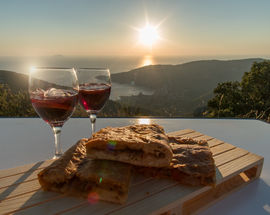
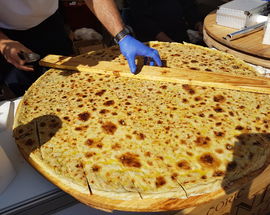
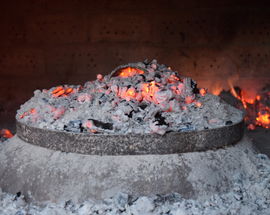
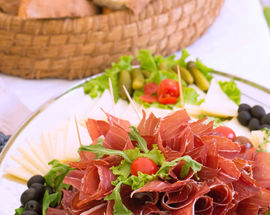

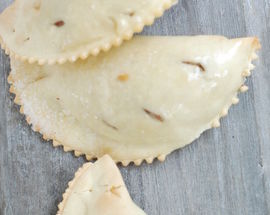
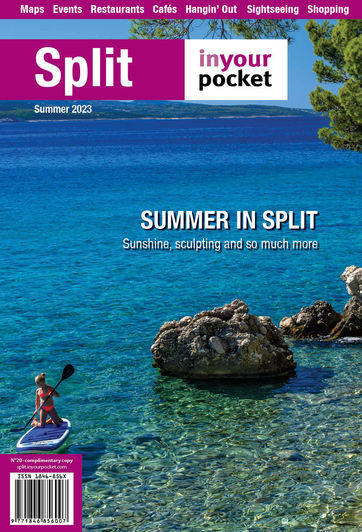


Comments